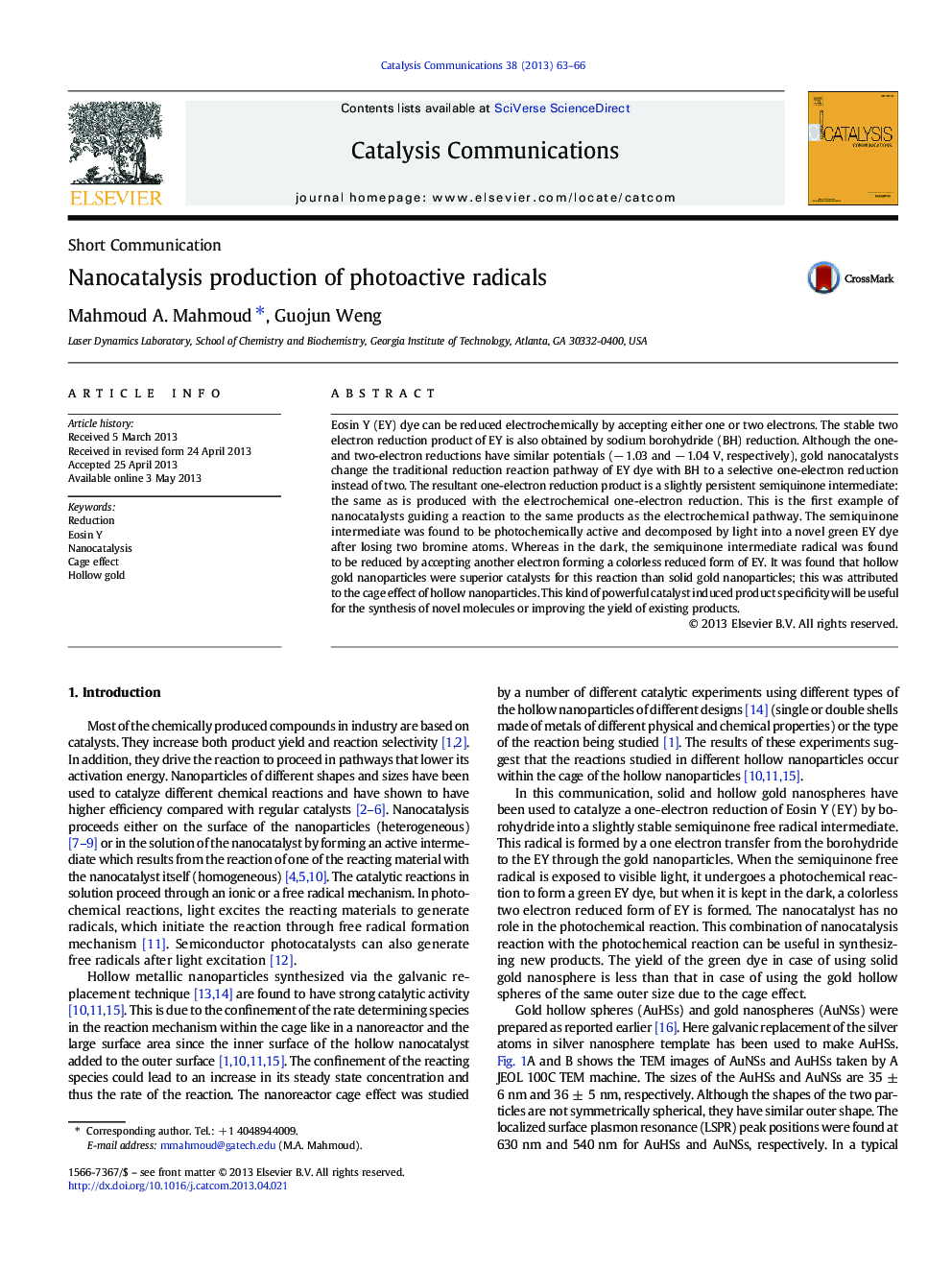| کد مقاله | کد نشریه | سال انتشار | مقاله انگلیسی | نسخه تمام متن |
|---|---|---|---|---|
| 50508 | 46797 | 2013 | 4 صفحه PDF | دانلود رایگان |

• Gold nanocatalyst can do the same function as the electrochemistry.
• Hollow nanocatalyst has good efficiency due to the nanoreactor cage effect.
• Thermal catalysis reaction is combined with photochemical reaction.
• A new green dye was prepared from by Esosin dye by gold nanoparticles and light.
Eosin Y (EY) dye can be reduced electrochemically by accepting either one or two electrons. The stable two electron reduction product of EY is also obtained by sodium borohydride (BH) reduction. Although the one- and two-electron reductions have similar potentials (− 1.03 and − 1.04 V, respectively), gold nanocatalysts change the traditional reduction reaction pathway of EY dye with BH to a selective one-electron reduction instead of two. The resultant one-electron reduction product is a slightly persistent semiquinone intermediate: the same as is produced with the electrochemical one-electron reduction. This is the first example of nanocatalysts guiding a reaction to the same products as the electrochemical pathway. The semiquinone intermediate was found to be photochemically active and decomposed by light into a novel green EY dye after losing two bromine atoms. Whereas in the dark, the semiquinone intermediate radical was found to be reduced by accepting another electron forming a colorless reduced form of EY. It was found that hollow gold nanoparticles were superior catalysts for this reaction than solid gold nanoparticles; this was attributed to the cage effect of hollow nanoparticles. This kind of powerful catalyst induced product specificity will be useful for the synthesis of novel molecules or improving the yield of existing products.
Figure optionsDownload as PowerPoint slide
Journal: Catalysis Communications - Volume 38, 5 August 2013, Pages 63–66